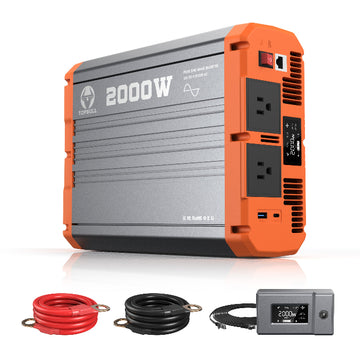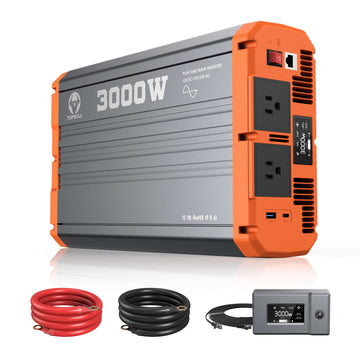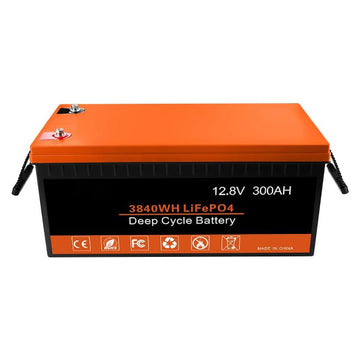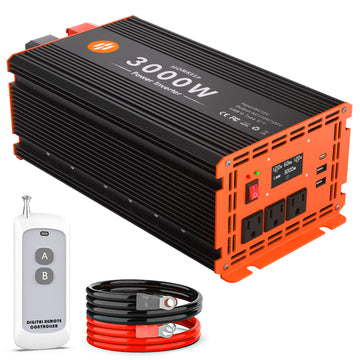Lithium batteries often lose their charge and discharge capabilities over time. When this happens, you have only two options. The first is to replace the battery, which can cost a lot of money. The second option is to try reconditioning, which is both economical and appropriate. So how should lithium battery repair be done?
Charging and discharging principles of lithium batteries
Before we understand how lithium-ion batteries work, let's look at the components of a lithium-ion battery.
The positive electrode - often called the anode - is the part of the battery where the negative ions are oxidized. The materials commonly used for the anode are lithium manganate, lithium cobaltate, and lithium nickel cobalt manganate materials.
Diaphragm - Used to separate the anode from the cathode when ion transfer occurs in the battery.
The negative electrode - often referred to as the cathode - is the part of the battery from which the regular current flows. The active material in the cathode is graphite or carbon with a graphite-like structure.
Organic electrolyte - this is the part of the battery that is made of molecules that are abundant in the earth.
Battery casing - it can be classified as steel casing (square ones are rarely used), aluminum casing, nickel-plated iron casing (used in cylindrical batteries), aluminum-plastic foil (flexible packaging), etc., as well as the battery cap, which is also the positive and negative output end of the battery.

Charging and discharging process
When the battery is charged, lithium ions are generated at the positive electrode of the battery, and the generated lithium ions move to the negative electrode under the action of the electrolyte.
Since the carbon anode is a layered structure with many micropores, the lithium ions that reach the anode are embedded in the micropores of the carbon layer, and the more lithium ions are embedded, the higher the charging capacity. Similarly, when the battery is discharged (that is, the process of using the battery), the lithium ions embedded in the carbon layer of the negative electrode come out and move back to the positive electrode.
The more lithium ions return to the positive electrode, the greater the discharge capacity, we usually say the battery capacity is the discharge capacity. It is not difficult to see, lithium-ion batteries in the charging and discharging process, lithium ions are in the movement from the positive pole to the negative pole, and then to the negative pole.
Battery protection board
A battery protection board is a kind of integrated circuit board for lithium battery management and protection. The reason why lithium batteries need to be protected is that the material of lithium batteries itself determines that they cannot be overcharged, over-discharged, overcurrent, short circuit, ultra-high temperature charging, and discharging. Therefore, lithium batteries will always have a protection board and a current isolation board.
What is lithium battery repair?
Lithium battery reconditioning is the process of performing a series of operations on a lithium battery that has degraded or developed problems in use to restore its performance and extend its life. In this case, you can avoid purchasing a new battery. The main goals of reconditioning a lithium battery are to increase the battery's charge capacity, extend its life, reduce leakage current, and restore the overall performance of the battery.
If a lithium battery has no reconditioning value, it can only be recycled as scrap. On the other hand, if it is used infrequently and has a sudden failure (such as insufficient charging, sudden loss of range, sudden loss of power, inability to start, etc.), such a battery will have a recovery value.
18650 lithium battery repair method principle
After a long period of use, the metal surface of 18650 lithium batteries may oxidize, resulting in poor contact between the battery and the device, which will affect battery life. Using an eraser or other tool to remove the oxidation from the surface can improve battery/device contact and performance.
Lithium batteries go through many charge/discharge cycles during use. During this process, collisions occur between the positive and negative charges within the battery, promoting an active state of the battery. The thermal movement of the molecules will gradually destroy the microstructure of its internal molecular arrangement, accelerating the aging of the battery, and the efficiency of the stored charge will gradually decline.
Once damaged, the internal microstructure of lithium batteries cannot be fully restored. Long-term use of non-standard recovery methods may accelerate battery exhaustion.
Deep discharge refers to improving battery performance by allowing the battery to deplete its internal charge and then recharging it. This method should be used with caution and may require some unconventional means. Find a way to connect the phone to a small 1.5V light bulb, and the electricity inside the Li-Ion battery will be conducted to the small bulb until it lights up. After discharging, the recharged phone battery will last longer.
How to repair 18650 lithium batteries

Cold temperatures can change the electrolyte inside a lithium battery and promote chemical reactions in a freshly frozen battery. When a lithium battery is placed in a low-temperature environment, the surface of the battery and the microstructure of the electrolyte will change, making the internal battery temporarily inactive and reducing the leakage current. As a result, the standby time of the battery after recharging can be extended to a certain extent.
Another method is to remove the lithium battery and leave it for about a week to allow the battery to discharge slowly. Then use the device to completely discharge the battery and recharge it. During this process, the battery may have a shorter charging time. When charging is complete, remove the battery and repeat the process several times. This repeated charging and discharging process can effectively improve the battery performance.
Lithium battery pack troubleshooting
Before starting the lithium battery repair method, always try to find some initial causes first.
Appearance: observe the appearance of whether there is broken leakage, corrosion, expansion, burning hot, water, and other conditions, to determine the risk of operation to avoid accidents.
Voltage: Use a multimeter to measure the voltage of the battery charging and discharging port. If the measurement of the charging and discharging port voltage is 0, first measure the connection to the protection board whether there is voltage, if there is voltage, then test whether the connection line is de-welded, or broken, if the line check is normal, then you can judge the failure point may be in the protection board, the need to replace the protection board or the battery pack will be electrically charged for testing.
Failure analysis of the circuit board: Detect whether the protection board is the normal method of visual inspection, whether the components are burned or traces of explosion. Different circuit board manufacturers have different circuit designs. The general circuit board is replaced rather than repaired, and if one component is damaged, it will cause a chain reaction.
As a result, the performance of other components will deteriorate or be damaged. If maintenance is not thorough, it will bury hidden dangers. The damage to the protection board is generally related to the mismatch of charging voltage and current, and when doing lithium battery repair, it is important to pay attention to the model, voltage, current, and other parameters of the supporting charger.
Can not charge, discharge: Battery pack voltage, but can not charge or discharge, the internal cell damage probability is higher. When the normal cell voltage is already at the highest operating voltage, the protection board will start the overcharge protection and can not be charged. However, if the voltage of the damaged cell is already zero or below the minimum operating voltage, the protection board will start the over-discharge protection at the same time.
Balancing cells: Lithium batteries are typically made up of multiple cells. As a result, sometimes a single-cell overcharge or discharge problem is combined with a battery problem. In this case, you need to address that single-cell problem rather than continuing with lithium battery repair.
See more: 10 Exciting Ways To Use Your 12V Lithium Batteries
Common lithium battery repair methods

1. Cleaning the terminals
If you do not notice any obvious problems with the lithium-ion battery, clean the battery terminals first. Metal corrosion can hinder power delivery. Therefore, please wipe the terminals with a cotton cloth. Using sandpaper may be a good choice. After the cleaning process, you can apply some petroleum jelly and then re-secure the terminal connections.
2. Resting Batteries
Modern lithium batteries are equipped with a BMS battery control system. This system prevents the battery from overcharging and discharging. Sometimes, the indicators of the BMS start to fail. Therefore, in this case, the battery may cause inconvenient performance. You can restore the BMS to factory settings using the lithium-ion battery recovery method.
3. Recovering a Lithium-Ion Battery Pack
Typically, a lithium-ion battery is a combination of many 3.7V cells. If any of these cells fails or does not work properly, it will cause problems for the whole battery. Therefore, repairing the Li-Ion battery pack is the most economical method. It is necessary to use a multimeter to check the voltage of each cell individually and to track down faults with a voltage range below 3.6V when fully charged. Once identified, it must be replaced by removing and soldering it to a new battery with the same rating.
4. Balancing the battery
After replacing the Li-Ion battery cells with new ones to repair them, you must balance all the cells in the same voltage range; to do this, charge them one by one using a Li-Ion battery charger rated at 3.7 volts. It will repair the lithium battery, help it to become fully charged, and naturally disconnect it from the power source.

















